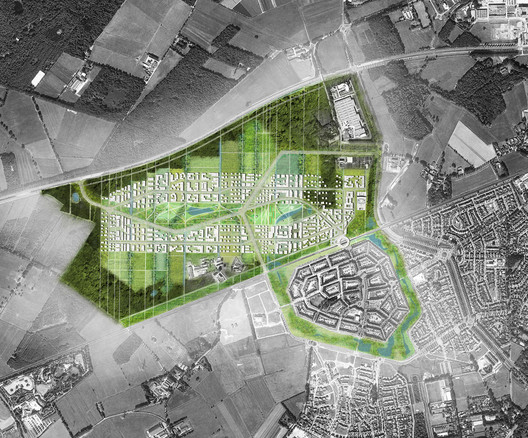↑ Brainport Smart District Master Plan. Image Courtesy of UNStudio
Interesting article on Smart Cities from a Architectural point-of-view with a welcome emphasis on the “Human-Centered Approach”
 by Christele Harrouk – 21 Feb. 2020
by Christele Harrouk – 21 Feb. 2020
Designing Smart Cities: A Human-Centered Approach
Because the concept of smart cities is still very new, with rare finalized and implemented projects, the topic is still unclear. Although big titles and strategies are well defined, the on-ground application is still uncertain, giving us the opportunity to question its planning process. In fact, how can we go wrong when designing smart cities? What key element are we failing to address in the planning phase?

The answer is quite simple. While a lot of city leaders try to skip crucial planning phases to buy time and save money, they often tend to do so by reducing community involvement. Gathering data and implicating every citizen in order to expose the glitches and the needs of society is usually an extensive process. In fact, they would rather adopt basic technologies and generic master plans, than questioning the problems faced by citizens and generating a solution-based design. Governmental officials would prioritize tech over people and not the other way around. Evolving into common practice, many bureaucrats praise a bottom-up approach, but wouldn’t reach out to the less fortunate and the most marginalized part of the society.Save this picture!

Neglecting the human component is by far the worst mistake that an aspiring smart city can do. If these future smart cities aim for efficiency, they just cannot be planned without the community. John Harlow, a smart city research specialist at The Emerson College Engagement Lab, even states that “Smartness in cities comes from people understanding what’s important to them and what problems they are experiencing”. Therefore, a city cannot be considered smart if it doesn’t revolve around humans.
While Smart cities are becoming a tool for marketing, with identical strategies implemented everywhere in the world, Harlow suggests starting small. With acupuncture-like interventions, city leaders can identify key problems and experiment with technologies. In fact, by starting out with a pilot phase, where different technologies can be tried, monitored and altered according to tangible results, cities can reach more efficient solutions. Moreover, by creating this testing time, community feedback can be collected. People can get familiar with these new tools and bring forward their ideas, improving eventually its performance.

Smart city technology doesn’t necessarily consist of autonomous vehicles and drones. In fact, it can take on simpler initiatives like air quality sensors near highways, water sensors in stormwater drains, or cameras that can collect data about the number of people in a public place in order to have a better understanding of their common habits. Finally, speaking of data, when it comes to its management, Harlow suggests also involving the community, so that people can trust the system and take the necessary measures to correct errors.
Both government and community believe that any technology can solve problems. Little do they know that by putting people at the center of the equation, they can initiate a better conversation, determine specific issues, and find contextual technology-based solutions to fix these obstacles.
View original article at www.archdaily.com





Recent Comments